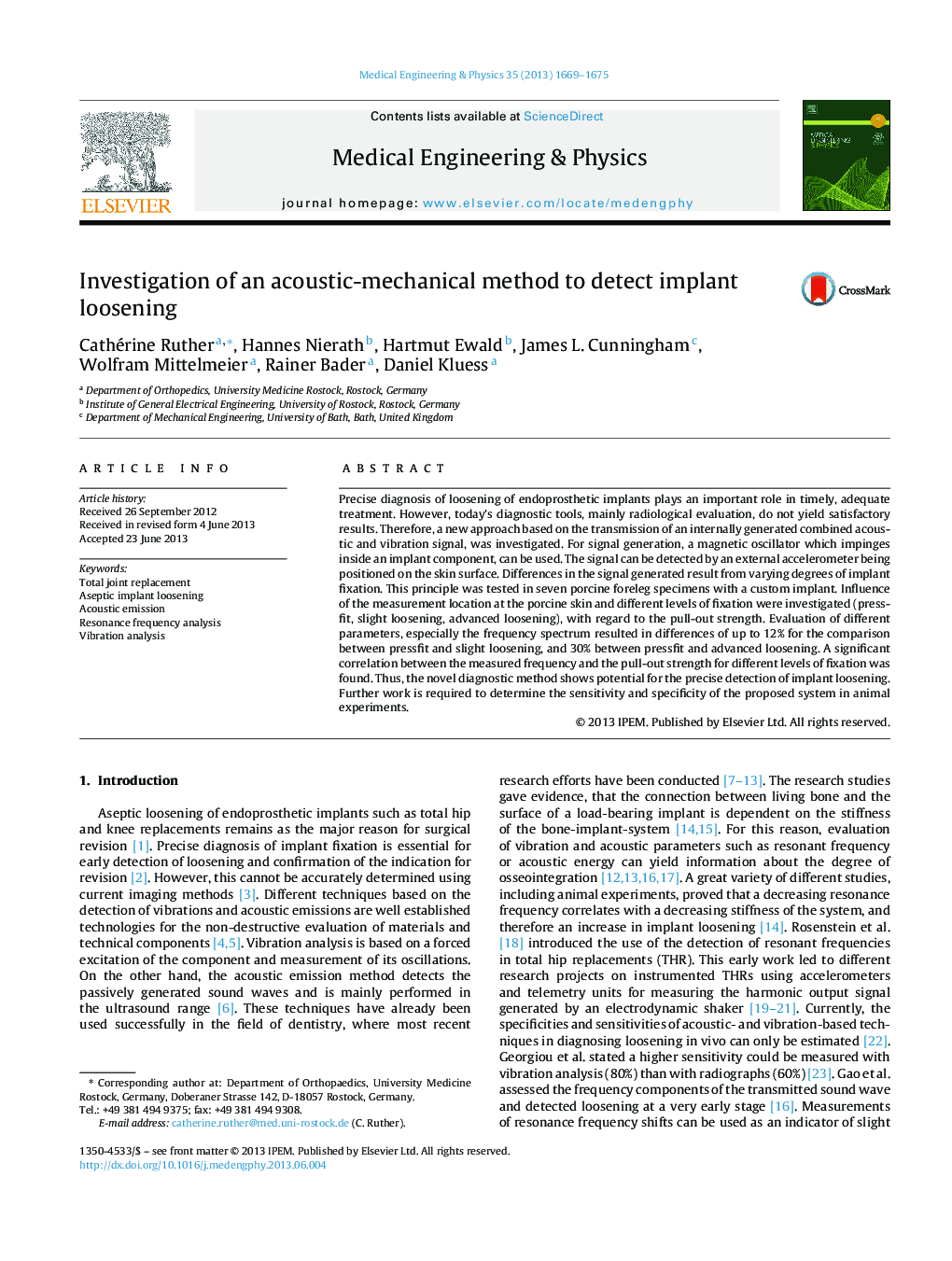| Article ID | Journal | Published Year | Pages | File Type |
|---|---|---|---|---|
| 875784 | Medical Engineering & Physics | 2013 | 7 Pages |
Precise diagnosis of loosening of endoprosthetic implants plays an important role in timely, adequate treatment. However, today's diagnostic tools, mainly radiological evaluation, do not yield satisfactory results. Therefore, a new approach based on the transmission of an internally generated combined acoustic and vibration signal, was investigated. For signal generation, a magnetic oscillator which impinges inside an implant component, can be used. The signal can be detected by an external accelerometer being positioned on the skin surface. Differences in the signal generated result from varying degrees of implant fixation. This principle was tested in seven porcine foreleg specimens with a custom implant. Influence of the measurement location at the porcine skin and different levels of fixation were investigated (pressfit, slight loosening, advanced loosening), with regard to the pull-out strength. Evaluation of different parameters, especially the frequency spectrum resulted in differences of up to 12% for the comparison between pressfit and slight loosening, and 30% between pressfit and advanced loosening. A significant correlation between the measured frequency and the pull-out strength for different levels of fixation was found. Thus, the novel diagnostic method shows potential for the precise detection of implant loosening. Further work is required to determine the sensitivity and specificity of the proposed system in animal experiments.
